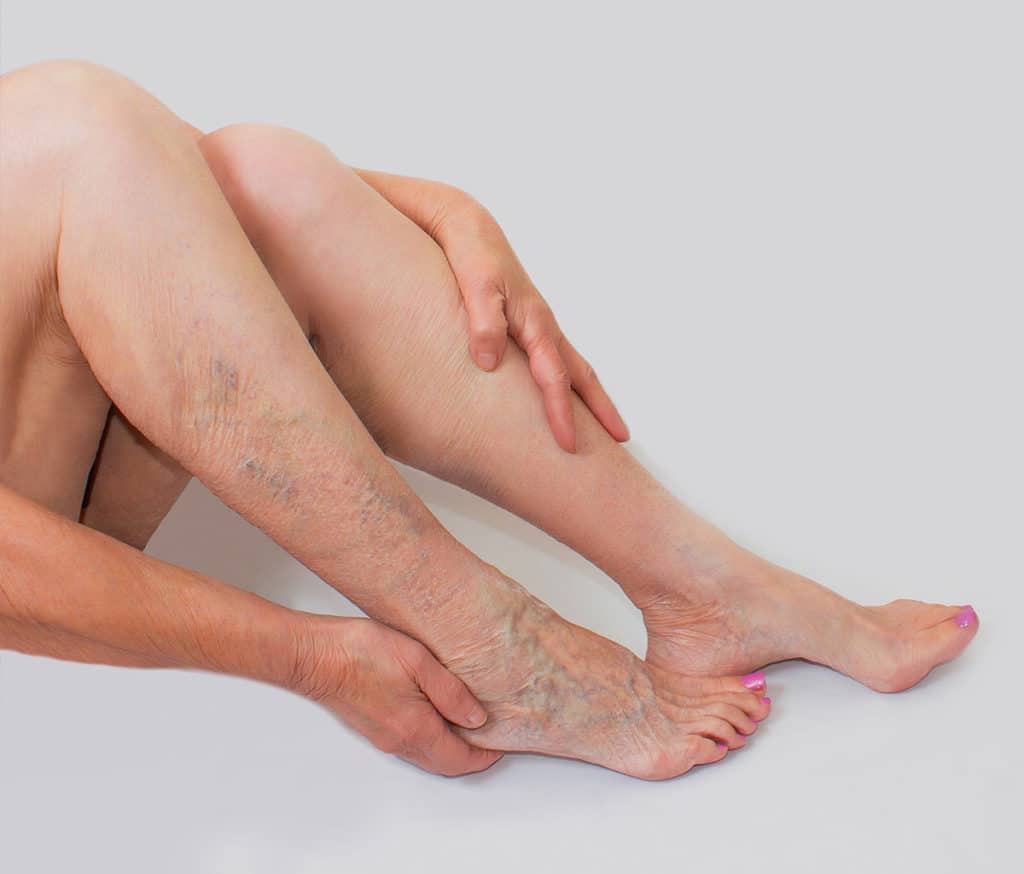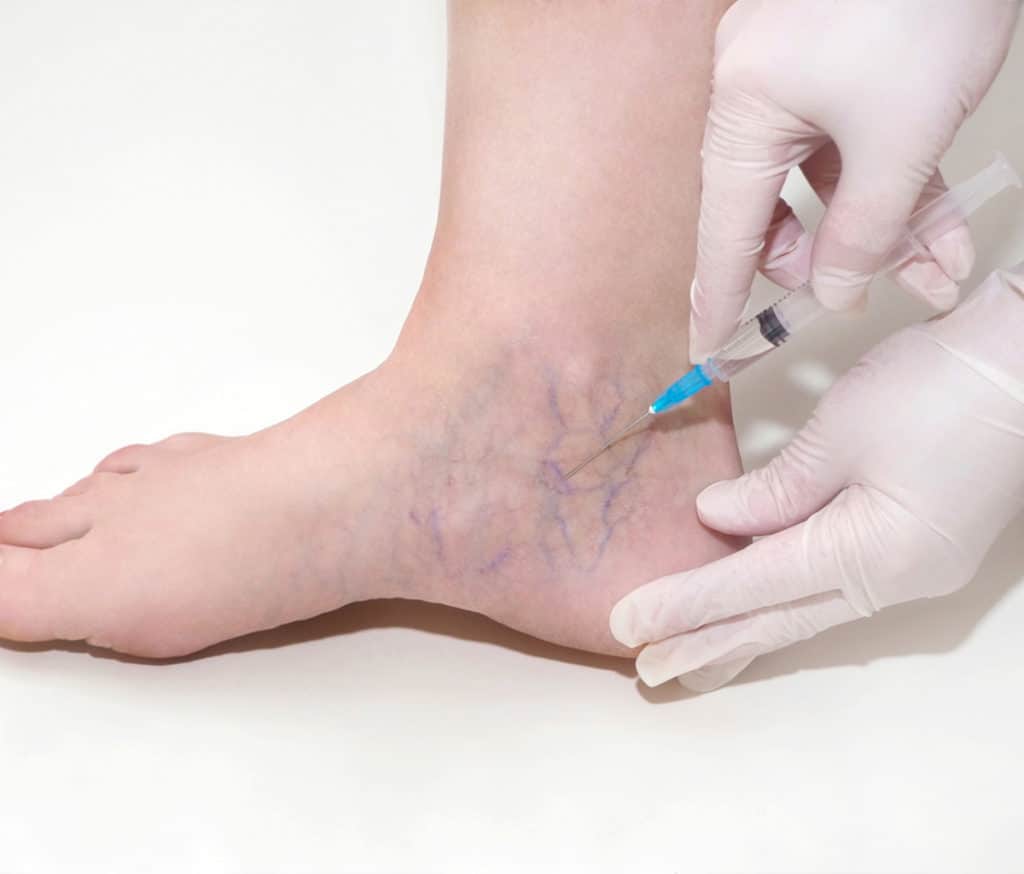Spider veins in the ankle and feet
While the most common place for varicose veins to occur is on the legs and calves, they can also affect your feet and ankles. Spider veins in the feet and ankles are a relatively common issue experienced by many people.
Why do they occur?
Spider veins in the feet and ankles generally occur because of a weakness in the vein wall, but can also occur due to damaged valves in the larger veins in the leg which can result in blood pooling and distention.
Spider veins are commonly hereditary, meaning that if your parents or grandparents have them, it is likely you will develop them as well.
Other factors increasing your risk of developing spider veins include:
- Age
- Gender
- Obesity
- Standing or sitting for long periods of time.


How are they treated?
If the spider veins in the feet and ankles are mild, there are a few first line treatments that can be trailed at home. These include maintaining a regular exercise regime along with a healthy diet, wearing compression stockings, keeping legs elevated, massaging the area, and avoiding restrictive clothing.
If these are not sufficient, or if the veins are more severe, there are several safe non-invasive medical interventions available. These include:
What is the treatment process?
Before deciding upon a treatment plan, Doctor Cohen will take some time to understand your personal history, while also looking at how your underlying veins are functioning. This will be done using a special ultrasound called a venous incompetence scan. Most of these scans will reveal nothing abnormal, however, in some cases they will show an incompetence or weakness in the underlying venous system that will need to be resolved prior to treating the spider veins. If this is the case, Doctor Cohen will likely recommend waiting three months post treatment of the larger varicose veins before starting treatment for your spider veins.








